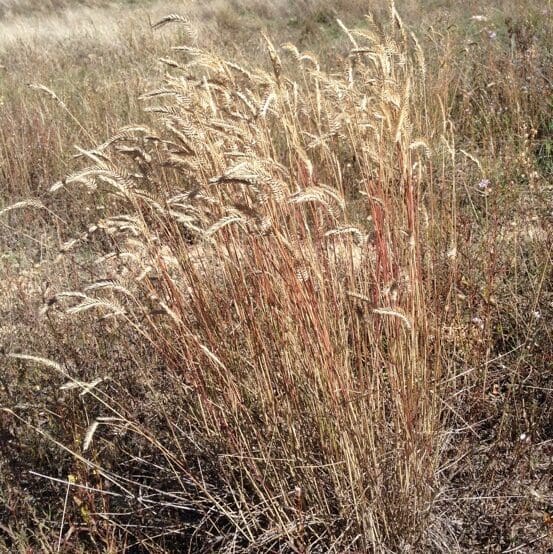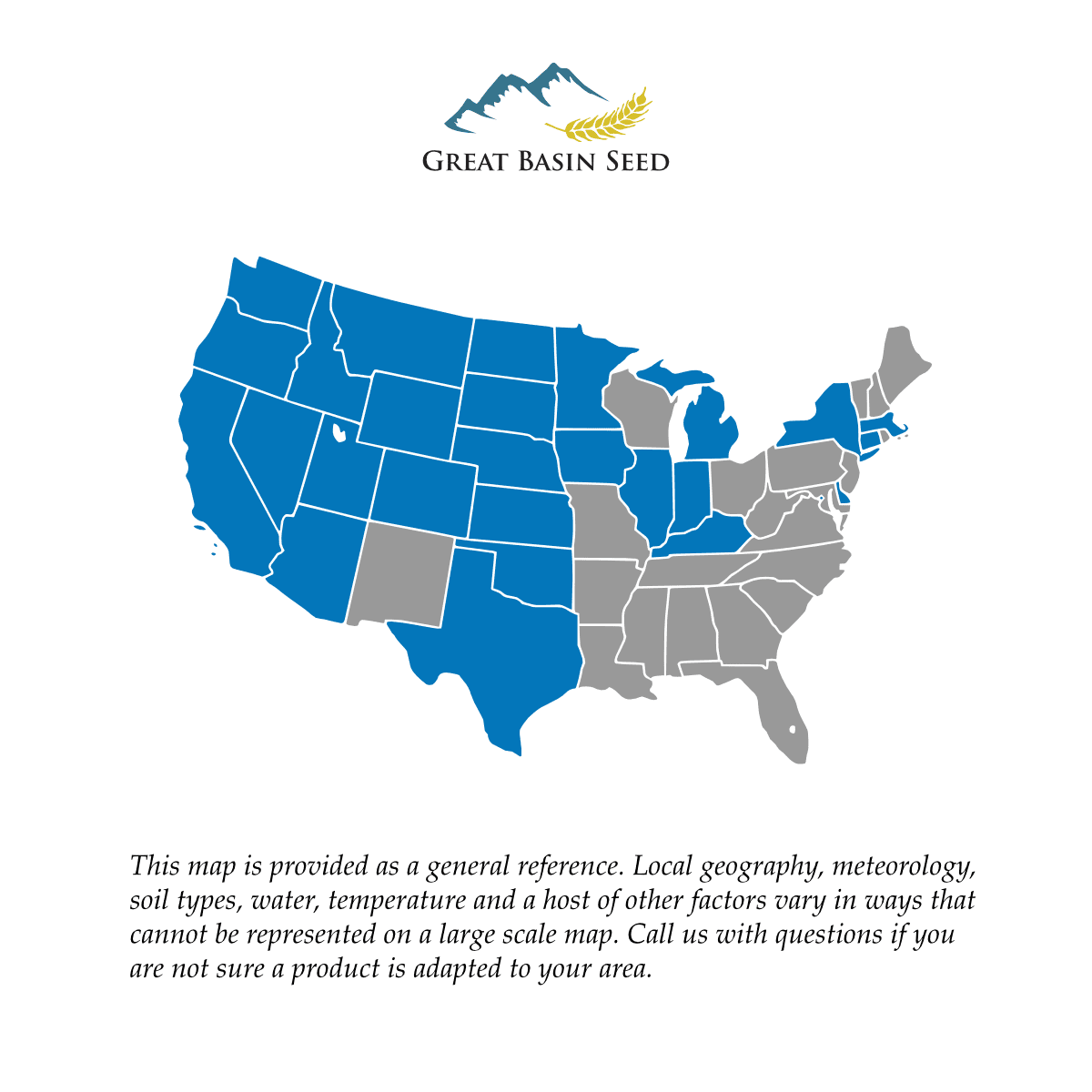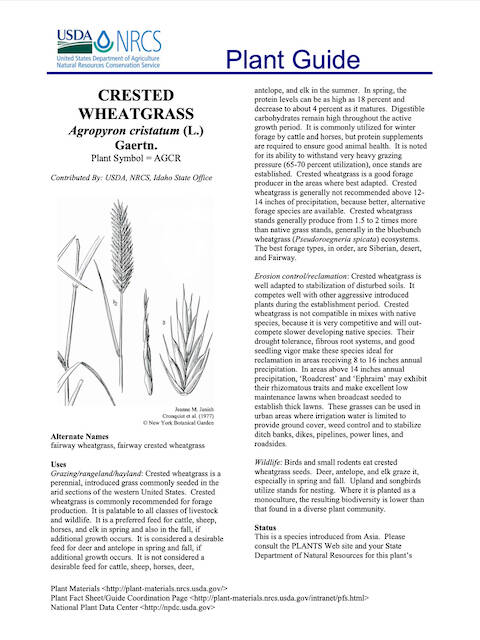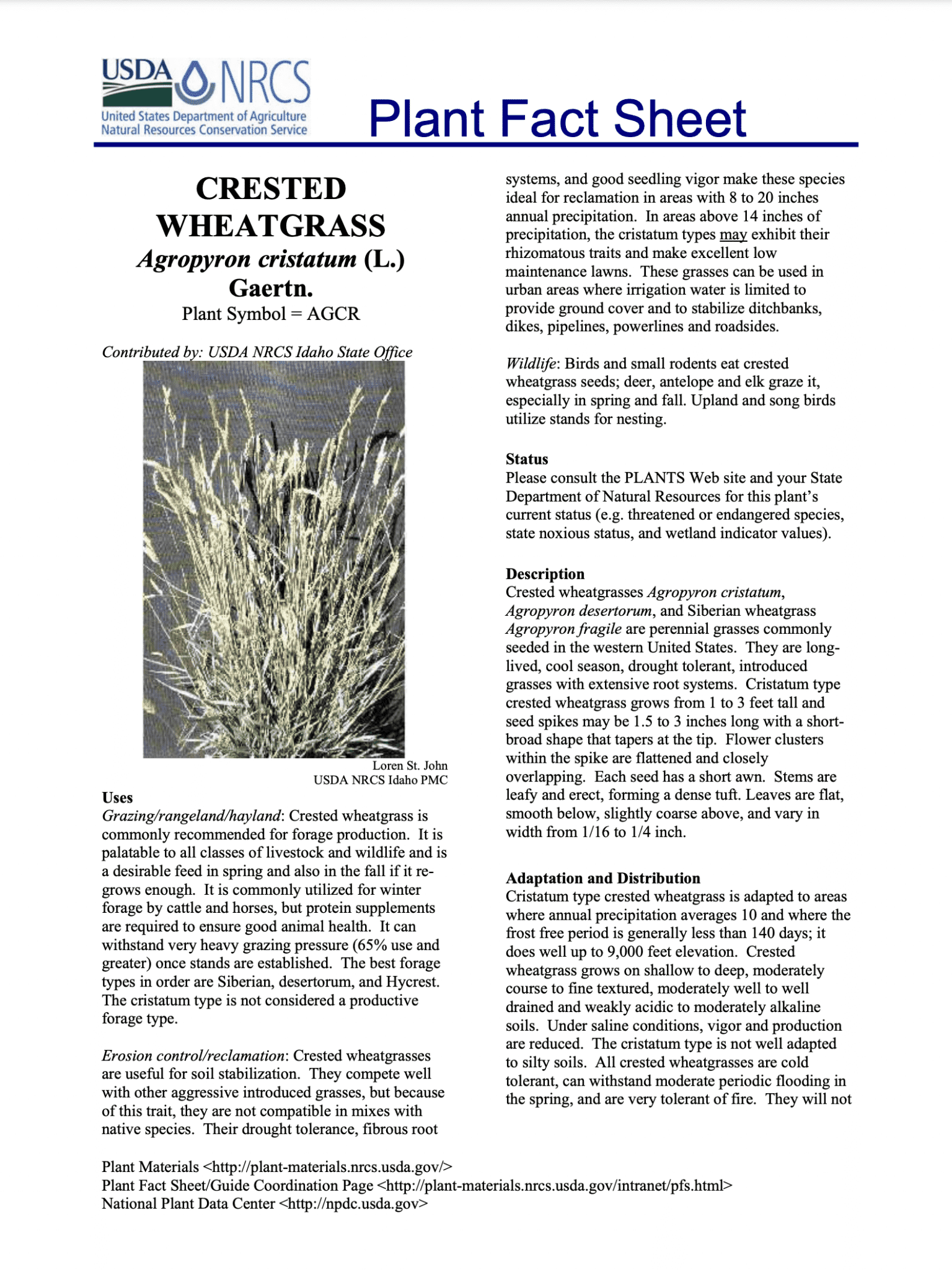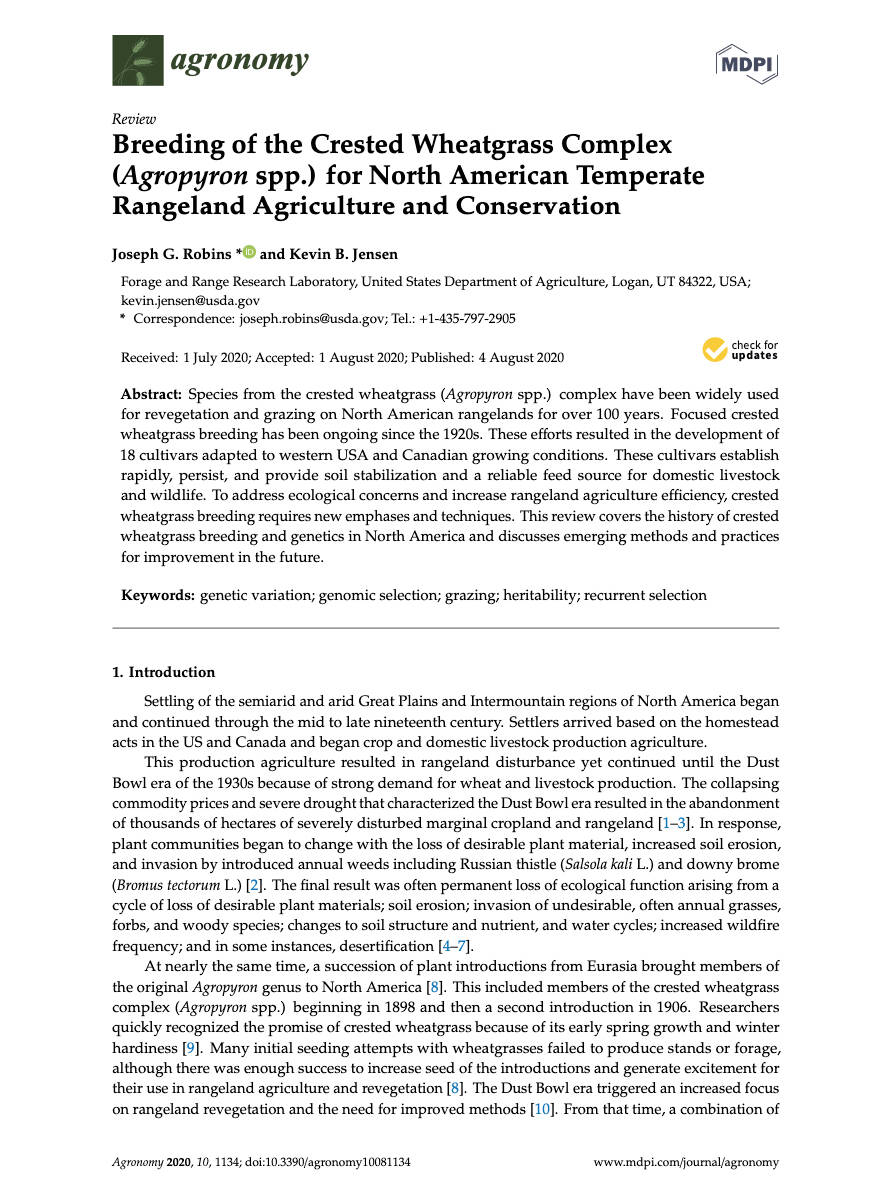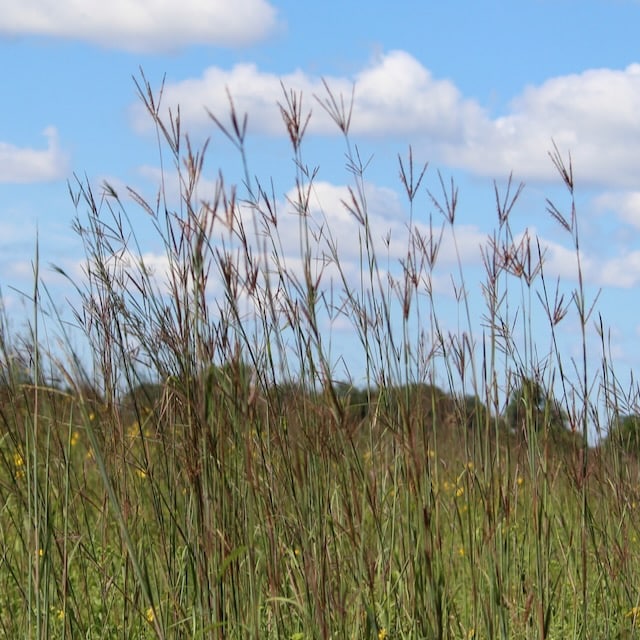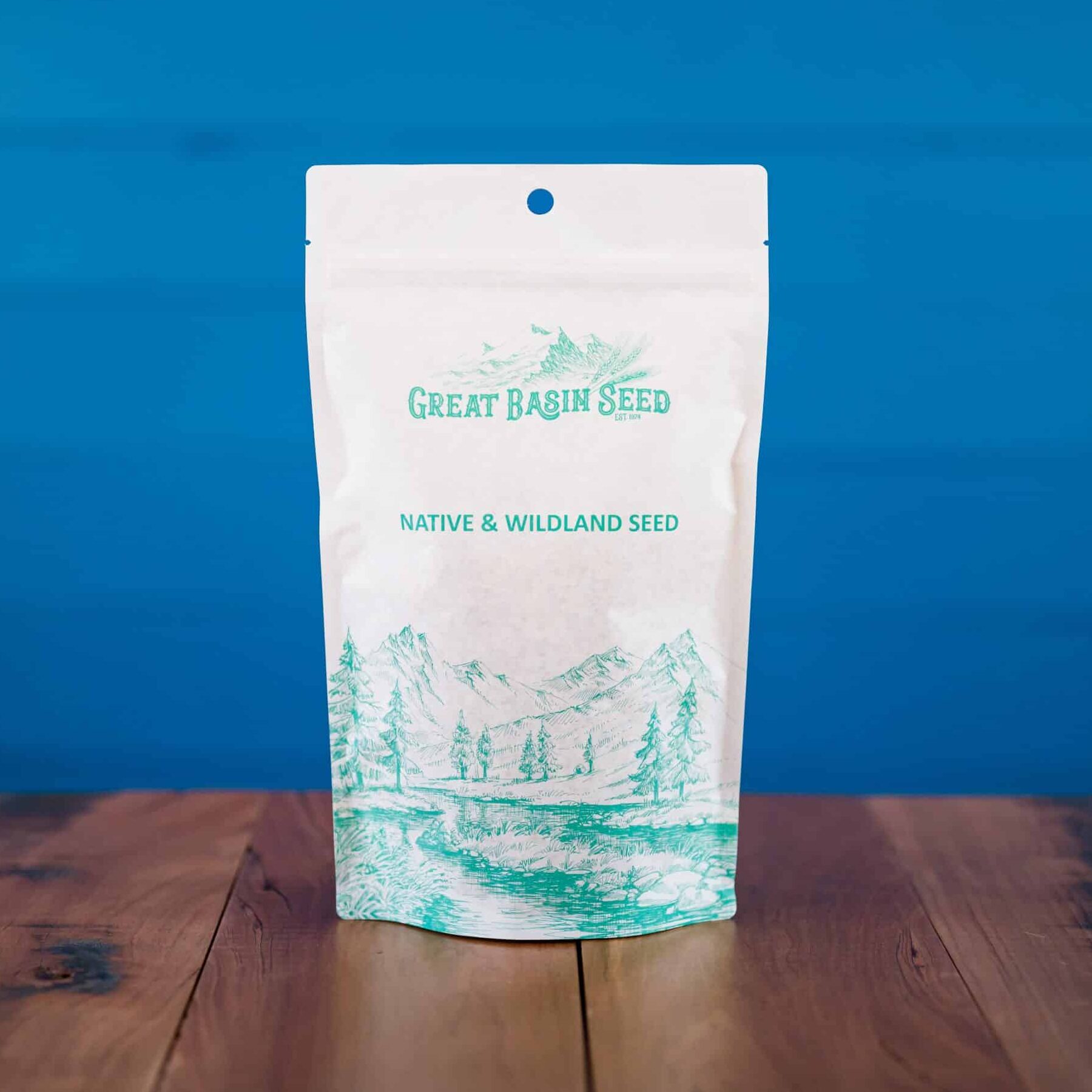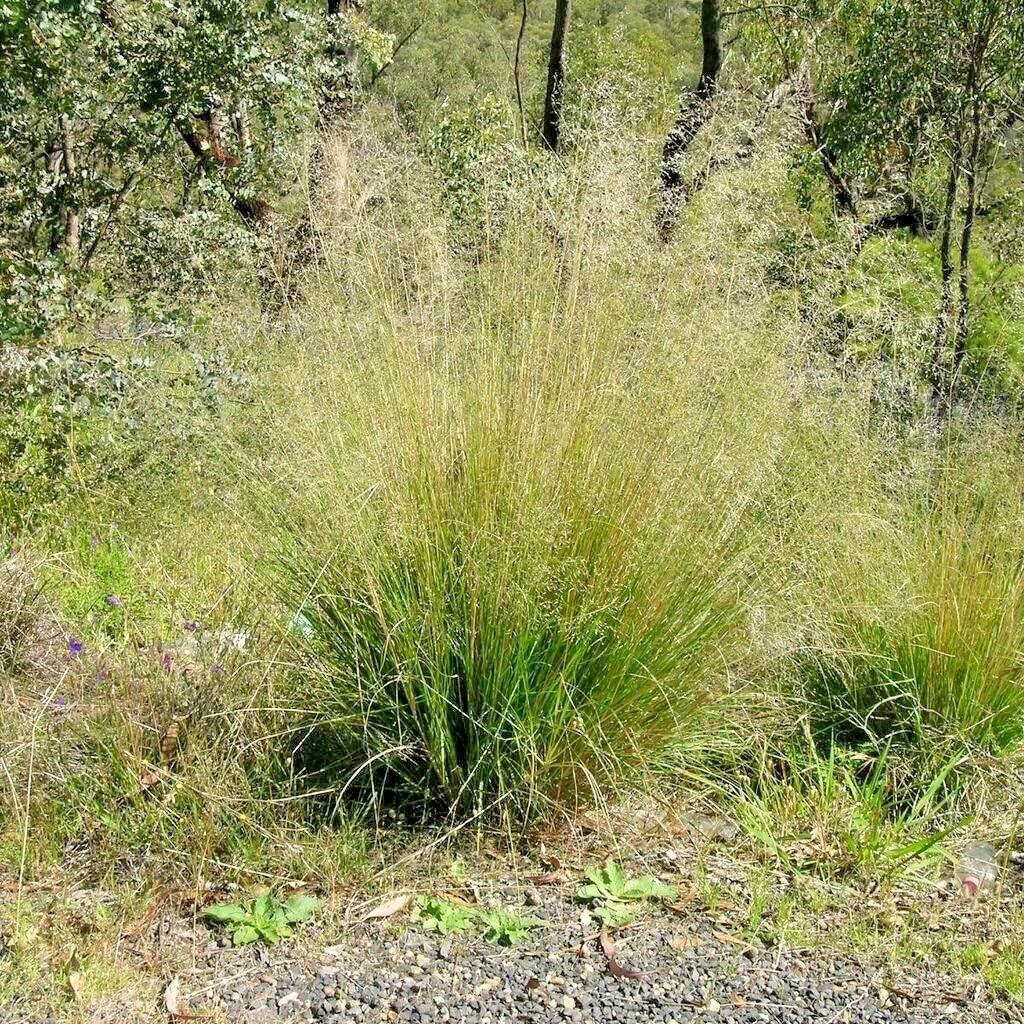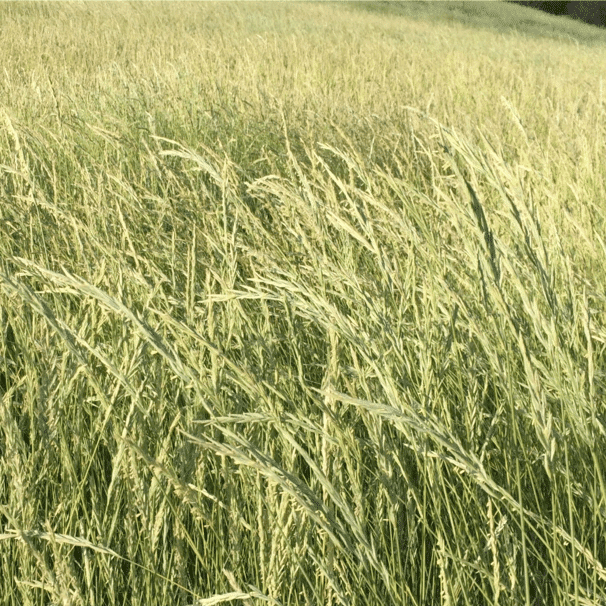Min. to Max. Annual Precipitation
32in.
Average Max. Height
Nordan Crested Wheatgrass (Agropyron desertorum) is a long-lived grass used in a wide variety of situations from reclamation to grazing. It will tolerate heavy grazing, providing best forage in early season. It is quick to establish and has good seedling vigor. Commonly recommended for forage production. It is palatable to livestock and wildlife and is a desirable feed in spring, and in the fall if it re-grows enough. Used for cattle and horse winter forage.
Nordan Crested Wheatgrass (Agropyron desertorum) is also know as Standard Crested or Desert Wheatgrass. It is a long-lived grass used in a wide variety of situations from reclamation to grazing. It will tolerate heavy grazing, providing best forage in early season. It is quick to establish and has good seedling vigor. ARS at the Northern Great Plains Research Laboratory, Mandan, North Dakota, developed ‘Nordan’. ARS and ND Agricultural Experiment Station released Nordan in 1953. It is uniform, erect, with heavy seeds that are awnless. The seed heads are dense and compressed. It has good seedling vigor and seed quality and long-term forage yields are equal to the newer varieties. It is very palatable in spring and fall, but less so in summer.
Crested wheatgrass is commonly recommended for forage production. It is palatable to livestock and wildlife and is a desirable feed in spring, and in the fall if it re-grows enough. It is used for cattle and horse winter forage, but protein supplements are required to ensure good animal health. It withstands heavy grazing pressure (65% use and greater) once stands are established. The best forage types in order are Siberian, Desertorum, and Hycrest.
Crested wheatgrasses are useful for soil stabilization. They compete well with other aggressive introduced grasses. Their drought tolerance, fibrous root systems, and good seedling vigor make these species ideal for reclamation in areas with 8 to 20 inches annual precipitation. These grasses can be used in urban areas where irrigation water is limited to provide ground cover and to stabilize ditch banks, dikes, pipelines, power lines and roadsides. Birds and small rodents eat crested wheatgrass seeds; deer, antelope and elk graze it, especially in spring and fall. Upland and song birds utilize stands for nesting.
Agropyron cristatum, Agropyron desertorum, and Agropyron fragile are perennial grasses commonly seeded in the western United States. They are long-lived, cool season, drought tolerant, introduced grasses with extensive root systems. Crested wheatgrass grows from 1 to 3 feet tall and seed spikes may be 1.5 to 3 inches long.
Crested wheatgrasses are adapted for non-irrigated seedings where annual precipitation averages 8 inches or more and where the frost free period is generally less than 140 days. The desertorum type is adapted to the Northwest, Intermountain and Great Plains regions with at least 8 inches of annual precipitation below 6500 feet elevation. It does well on shallow to deep, moderately course to fine textured, moderately well to well drained and weakly acidic to moderately alkaline soils. Under saline conditions, vigor and production are reduced. The desertorum type is more saline tolerant and equal to or more productive than other crested wheatgrass types. All wheatgrasses are cold tolerant, can withstand moderate periodic flooding in the spring, and are very tolerant of fire. They will not tolerate long periods of inundation, poorly drained soils or excessive irrigation.
***Click on the “Quick Plant Facts” tab above for more information.
Other Desert Wheatgrass Varieties
Hycrest: is a hybrid of Agropyron cristatum x desertorum bred for it’s excellent seeding vigor. It is easier to establish than either of it’s parents and is more productive and long lived.
Table of all Crested, Desert and Siberian Wheatgrasses
| Common Name & Variety | Scientific Name |
|---|---|
| Crested Wheatgrass | Agropyron cristatum |
| Douglas | Agropyron cristatum var. douglas |
| Ephraim | Agropyron cristatum var. ephraim |
| Roadcrest | Agropyron cristatum var. roadcrest |
| Parkway | Agropyron cristatum var. parkway |
| Ruff | Agropyron cristatum var. ruff |
| Desert or Standard Crested Wheatgrass | Agropyron desertorum |
| Nordan | Agropyron desertorum var. nordan |
| Summit | Agropyron desertorum var. summit |
| Siberian Wheatgrass | Agropyron fragile |
| Vavilov | Agropyron fragile var. vavilov |
| Vavilov II | Agropyron fragile var. vavilov II |
| P-27 | Agropyron fragile var. P-27 |
| Hybrid Crested/Desert Wheatgrass | Agropyron cristatum X Agropyron desertorum |
| Hycrest | Agropyron cristatum X Agropyron desertorum var. Hycrest |
| Hycrest II | Agropyron cristatum X Agropyron desertorum var. Hycrest II |
| CD II | Agropyron cristatum X Agropyron desertorum var. CD II |
Nordan Crested Wheatgrass NRCS Plant Release
Nordan Crested Wheatgrass NRCS Plant Release
PDF version of NRCS Plant Release Brochure
Citation: USDA Natural Resources Conservation Service, Plant Materials Center, Bismarck, ND 58504. Published July 2006, revised August 2012.
Crested Wheatgrass NRCS Plant Guide
Crested Wheatgrass NRCS Plant Guide
PDF version of NRCS Plant Guide & Fact Sheet
Prepared By & Species Coordinator Daniel G. Ogle, USDA NRCS Idaho State Office, Boise, Idaho.
Crested Wheatgrass NRCS Fact Sheet
Crested Wheatgrass NRCS Fact Sheet
PDF version of NRCS Plant Guide & Fact Sheet
Prepared By & Species Coordinator: Dan Ogle, Plant Materials Specialist USDA NRCS Idaho State Office, Boise, Idaho
Breeding of the Crested Wheatgrass Complex (Agropyron spp.) for North American Temperate Rangeland Agriculture and Conservation
Breeding of the Crested Wheatgrass Complex (Agropyron spp.) for North American Temperate Rangeland Agriculture and Conservation
Joseph G. Robins and Kevin B. Jensen
Forage and Range Research Laboratory, United States Department of Agriculture, Logan, UT
Helpful Links
Additional information about this product can be found on the academic websites linked below.
Synonyms
Many plants have more than one common and scientific name. We've listed a few of them below.
- Nordan Crested Wheatgrass
- Agropyron desertorum
- Standard Crested
- Desert Wheatgrass
Who is Great Basin Seed?
Great Basin Seed is a seed company that specializes in seed sales and consultation for home, ranch, farm, range and reclamation. We have been a leader in the seed industry since 1974.
Our History
We've been in the seed business since 1974.
What We Offer
We offer seed for home, farm, ranch, range and reclamation projects.
Meet the Gang
We have the best employees in the world! We are proud of the work they do, and trust them to serve you!
Right: Company founder Lloyd and his wife Paula Stevens in a wildflower seed production field circa 1977
Quick Plant Facts
| Common Name: | Desert Wheatgrass |
|---|---|
| Scientific Name: | |
| Lifespan: | |
| Origin: | |
| Plant Type: | |
| Seed Count | 175000 |
| Growth Height: | |
| Root Form | Bunchgrass |
| Sowing Rate | 5-10 PLS lbs. per Acre |
| Min. Precipitation | 6 – 8 Inches |
| Best SowingTime | Spring or Fall |
| Available Varieties: | |
| Hardiness Zones: |
